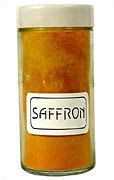People today want convenience, whether it be from their bank, credit card, favorite retail store, or restaurant. They demand it from the companies who hold their loyalty, including their health care providers (you). They don’t want to call and possibly be put on hold, and they want to use an app or schedule an appointment on your website. Here are three reasons your practice can gain by switching to online appointment scheduling.
Herbs & Botanicals
Saffron (fan hong hua)
What is saffron? What is it used for?
Saffron is arguably the most expensive herb in the world, due to amount of time and energy it takes to harvest. The term saffron actually refers to the dried stigmas and top of the saffron crocus, a type of flower similar to safflower.
In China, saffron grows predominantly in the Henan, Hebei, Zhejiang, Sichuan and Yunnan provinces. The stigmas are picked by hand and dried. It takes approximately 75,000 saffron flowers to produce one pound of saffron stigma. In many cultures, saffron is used as a spice and for culinary purposes; however, it has many medicinal uses as well.
 In traditional Chinese medicine, saffron has a sweet taste and cold properties, and is associated with the Heart and Liver meridians. Its main functions are to invigorate the blood, remove stagnation, clear the meridians and release toxins. It is typically used to treat conditions such as high fevers and related conditions that may be caused by pathogenic heat, and to help break up blood clots. There is also anecdotal evidence that saffron can inhibit the growth of some types of cancer cells. Small amounts of saffron can increase the incidence of contractions in pregnant women.
In traditional Chinese medicine, saffron has a sweet taste and cold properties, and is associated with the Heart and Liver meridians. Its main functions are to invigorate the blood, remove stagnation, clear the meridians and release toxins. It is typically used to treat conditions such as high fevers and related conditions that may be caused by pathogenic heat, and to help break up blood clots. There is also anecdotal evidence that saffron can inhibit the growth of some types of cancer cells. Small amounts of saffron can increase the incidence of contractions in pregnant women.
How much saffron should I take?
For febrile diseases, the recommended dosage of saffron is 1.5 to 3 grams of dried herb, usually taken as a decoction. Some practitioners may recommend slightly lower doses (0.5-2 grams).
What forms of saffron are available?
Dried saffron can be found at many supermarkets, as well as most Asian markets and specialty stores. Authentic saffron is extremely expensive.
What can happen if I take too much saffron? Are there any interactions I should be aware of? What precautions should I take?
Because saffron can stimulate contraction of the uterus, it should not be taken by pregnant women. Extremely high doses can be toxic; symptoms of saffron poisoning include vomiting, diarrhea, and dizziness. In addition, because saffron helps break up blood clots, it should not be taken by people who are on blood-thinning medications or who have heavy menstruation. As always, make sure to consult with a licensed health care provider before taking saffron or any other herbal remedy or dietary supplement.
References
- Dufresne C, Cormier F, Dorion S. In vitro formation of crocetin glucosyl esters by crocus sativus callus extract. Planta Med April 1997;16:150-3.
- Escribano J, Alonso GL, Coca-Prados M, et al. Crocin safranal and picrocrocin from saffron (Crocus sativus L.) inhibit the grown of human cancer cells in vitro. Cancer Letters February 27, 1996;100:23-30.
- Gruenwald J, Brendler T, Jaenicke C (eds). PDR for Herbal Medicines, 2nd edition. Montvale, NJ: Medical Economics Company, 2000, pp. 653-654.
- Nair SC, Kurumboor SK, Hasegawa JH. Saffron chemoprevention in biology and medicine: a review. Cancer Biother Winter 1995;5:257-64.
- Tang W, Eisenbrand G. Chinese Drugs of Plant Origin. Heidelberg: Springer Verlag, 1992.


